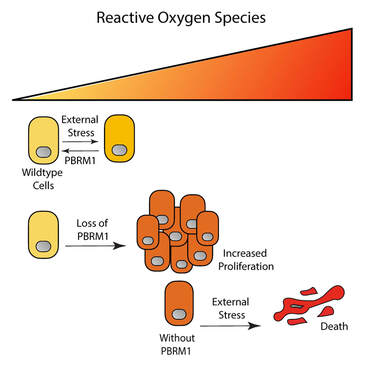|
PBRM1 will be the death of me. It is a beautiful but poorly behaved protein. We've spent years trying to pin down reliable phenotypes in renal cancer that relate to specific biochemical function and have been humbled again and again. We've found dozens of cell lines with no detectable PBRM1 knockout phenotype. Then we've defined a phenotype in one cell line only to find a completely different phenotype in a very similar cell line. Then to make things worse, we've identified a phenotype in a cell line, only to find that phenotype lost or completely reversed when we take the knockout cell line back out of storage.
While we all know by now that chromatin regulators have context-dependent function, we really need to pin down this context in order to figure out how PBRM1 acts as a tumor suppressor in renal cancer (and other cancers). So in this paper we went back to untransformed cells to define PBRM1's role in maintaining epithelial cell maintenance. To make a long story short (if you want the long version, it is all in the paper) we find that PBRM1 maintains the expression of stress response genes in epithelial cells. Under low stress conditions loss of PBRM1 is growth-promoting, but under high stress conditions PBRM1 is cytoprotective and is required for the induction of stress response genes, the reduction of reactive oxygen species, and, eventually the initiation of apoptotic pathways. Now that we've found this, we understand why the same cell line responds differently to PBRM1 loss depending on the cell culture conditions, and why cell lines with inherently high internal stress (oxidative stress or oncogene addition) are so sensitive to PBRM1 knockdown. It's been a frustrating process, but a fruitful one (I think). Now we can start to piece together how PBRM1 responds to environmental signals to change gene expression. We have a lot of work to do, but I am hopeful that we have model that can explain all the varied and contradictory phenotypes reported for PBRM1. "PBRM1 Regulates Stress Response in Epithelial Cells." https://www.ncbi.nlm.nih.gov/pubmed/31077944
0 Comments
Leave a Reply. |
AuthorDykhuizen Lab News Archives
May 2023
Categories |
Dykhuizen Lab
News and Pictures
Artwork by Libby Porter

 RSS Feed
RSS Feed